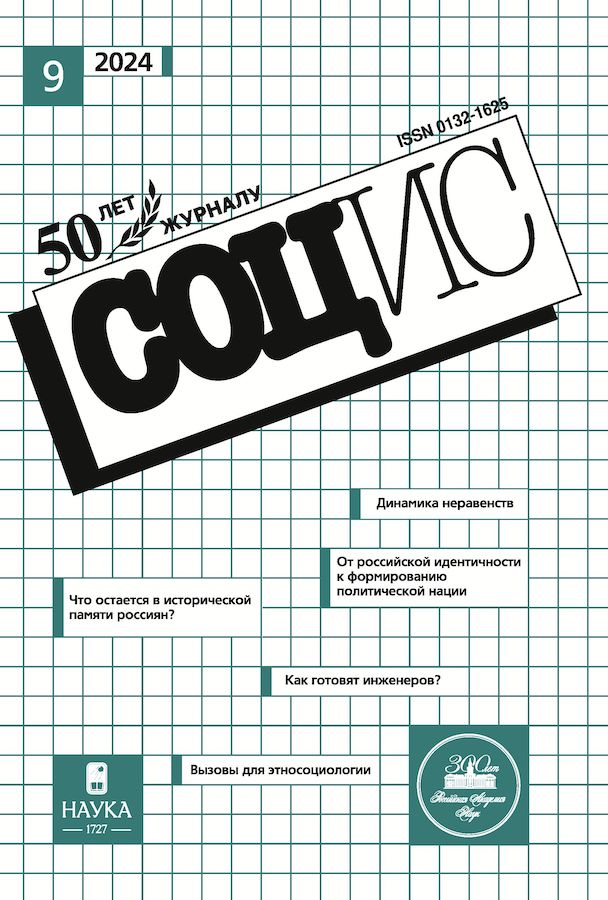Developing Stereotype “The Fighting People” of Russians (Discource and Content-Analisis of China Media and On-line “Weibo” Networks
- Authors: Xue R.1, Lukin A.2,1, Bocharova A.3
-
Affiliations:
- Zhejiang University
- MGIMO University
- HSE University
- Issue: No 9 (2024)
- Pages: 100-113
- Section: SOCIOLOGY OF MASS COMMUNICATIONS
- URL: https://clinpractice.ru/0132-1625/article/view/661946
- DOI: https://doi.org/10.31857/S0132162524090094
- ID: 661946
Cite item
Abstract
The theory of stereotypes, particularly national or ethnic stereotypes, has garnered significant attention from sociologists, political scientists, and scholars of international relations due to its theoretical significance and political implications. Stemming from Walter Lippmann’s notion of stereotypes as simplified mental pictures reflecting reality, this paper delves into the formation and evolution of stereotypes, particularly focusing on the Chinese perception of Russians as a “Fighting People” Examining the emergence of the term “Fighting People” in Chinese discourse, the paper traces its origin from online fandom of a Japanese anime series to its widespread adoption in official and unofficial Chinese media. Utilizing discourse, content, and sentiment analysis of online platforms such as Weibo, the study explores the propagation of this stereotype and its cultural connotations.
Full Text
About the authors
Ranran Xue
Zhejiang University
Author for correspondence.
Email: ranyu06@163.com
PhD
China, HangzhouAlexander Lukin
MGIMO University; Zhejiang University
Email: a.lukin@inno.mgimo.ru
Dr. Sci. (Hist.), Director of the Center of China, East Asia and Shanghai Cooperation Organization; Visiting Professor, School of Public Affairs
Russian Federation, Moscow; Hangzhou, ChinaAlexandra Bocharova
HSE University
Email: apbocharova@hse.ru
Research Fellow
Russian Federation, MoscowReferences
- Жэнь Жань. «Боевая нация» – национальный образ России в Китае // Социологические исследования. 2023. № 7. С. 127–132. [Ren Ran. (2023) “Fighting nation” – national image of Russia in China. Sotsiologicheskie Issledovaniya [Sociological Studies]. No.7: 127–132. (In Russ.)]
- Липпман У. Общественное мнение. М.: Институт Фонда «Общественное мнение», 2004. [Lippmann W. (2004) Public opinion. Moscow: Foundation Institute “Public opinion” (In Russ.)]
- Allport G. W., Postman L. L. (1947) The Psychology of Rumor. New York: Henry Holt.
- Almond G. A., Verba S. (1963) The Civic Culture: Political Attitudes and Democracy in Five Nations. Princeton: Princeton University Press.
- Aristotle (2013) Politics. Chicago: Chicago University Press.
- Bellerand M., Leerssen J. (2013) Imagology: The Cultural Construction and Literary Representation of National Characters: A Critical Survey. Amsterdam: Rodopi.
- Boulding K. E. (1959) National Images and International Systems. The Journal of Conflict Resolution. Vol. 3. No. 2: 120–131.
- Dyserinck H. (1966) Zum Problem der «images» und «mirages» und ihrer Untersuchung im Rahmen der Vergleichenden Literaturwissenschaft. Arcadia. No.1: 107–120.
- Guyard M-F. (1951) La Littérature Comparée. Paris: Presses Universitaires de France.
- Inkeles A. (1997) National Character: A Psycho-Social Perspective. London: Routledge.
- Jervis R. (1970) The Logic of Images in International Relations. New York: Columbia University Press.
- Jervis R. (1976) Perception and Misperception in International Politics. Princeton, NJ: Princeton University Press.
- Leersen J. (2016) Imagology: On using ethnicity to make sense of the world. Revue d’études ibériques et ibéro-américaines. No.10: 13–31.
- O’Hara R. (1961) Media for the Millions: The Process of Mass Communication. New York: Random House.
Supplementary files












